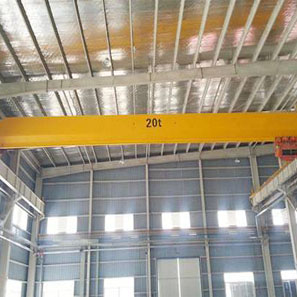Maintenance for Industry Cranes and HoistsCranes and Hoists
Lifting machinery is mainly used for loading, unloading and transferring materials, and is the primary equipment for modern production. The use of lifting and transporting machinery can reduce the labor intensity of workers, reduce loading and unloading costs, reduce damage to goods, increase labor productivity, and complete the production process of mechanical equipment that is not deficient in mechanization and automation. Therefore, it is widely used in production fields such as factories, mines, ports, stations, construction sites, and power stations. Hoisting machinery is a kind of mechanical equipment that uses intermittent and repetitive work to lift, lower, or lift and move heavy objects through lifting hooks or other spreaders. Its work features are cyclical. In each work cycle, its main organization makes a forward and reverse movement. Each cycle includes the loading and unloading of items, the working stroke of the transferred items and the return trip of the empty hook after unloading. There is a short break including preparation time for the assistant. Summarizing the working characteristics of hoisting machinery, analyzing from the perspective of safety skills, can be summarized as follows:
(1) Hoisting machinery usually has a huge structure and a relatively messy organization, which can complete one lifting movement, one or several horizontal movements. During the work process, several movements in different directions are often operated together, and the skills are more difficult.
(2) There are many kinds of heavy objects lifted, and the load changes. Some heavy objects weigh hundreds of tons or even thousands of tons, and some objects are tens of meters long and have very irregular shapes, making the lifting process messy and risky.
(3) Most hoisting machinery needs to operate in a larger range. Some need to install tracks and wheels (such as tower cranes, bridge cranes, etc.), and some need to install tires or crawlers to walk on the ground (such as automobiles). Cranes, crawler cranes, etc.), and other needs to walk on wire ropes (such as passenger and freight aerial ropeways), which have a large space for activities, and once an incident is caused, the area affected is also large.
(4) Some hoisting machinery needs to directly carry people on the guide rails, channels or wire ropes for lifting movements (such as elevators, lifting channels, etc.), and their reliability directly affects personal safety.
(5) There are many exposed and movable parts, and they often directly touch the lifting staff (such as hooks, wire ropes, etc.), which may cause many accidental risk factors.
(6) The working environment is messy. From large-scale steel complexes to modern ports and construction sites, there are cranes in operation; risk factors such as high temperature, high pressure, and strong magnetism are often encountered, which pose threats to equipment and staff.
(7) At work, multiple people are often required to cooperate to carry out an operation together, requesting command, strapping, driving and other staff to cooperate skillfully, coordinate their movements, and take care of each other. The staff should have the ability to deal with on-site emergencies. Close cooperation between multiple staff members is quite difficult. It is precisely because of the influence of many of the above factors that there are more lifting injuries. Therefore, when using lifting equipment, it is necessary to strictly control the safety and reduce the occurrence of accidents as much as possible. Enterprises should check the lifting equipment on time to eliminate potential safety hazards.
Related product:
Related Products
Contact us
If possible, kindly suggest please your working industry/process, working pressure, working medium, etc. Given detailed request helps to gain better-matched customized solution. Thanks for your patience.
your request will be responsed within 3 hours, kindly pay attention to your email please.










